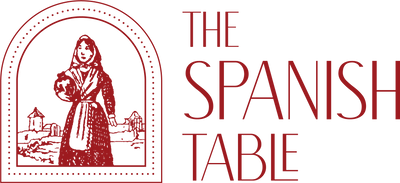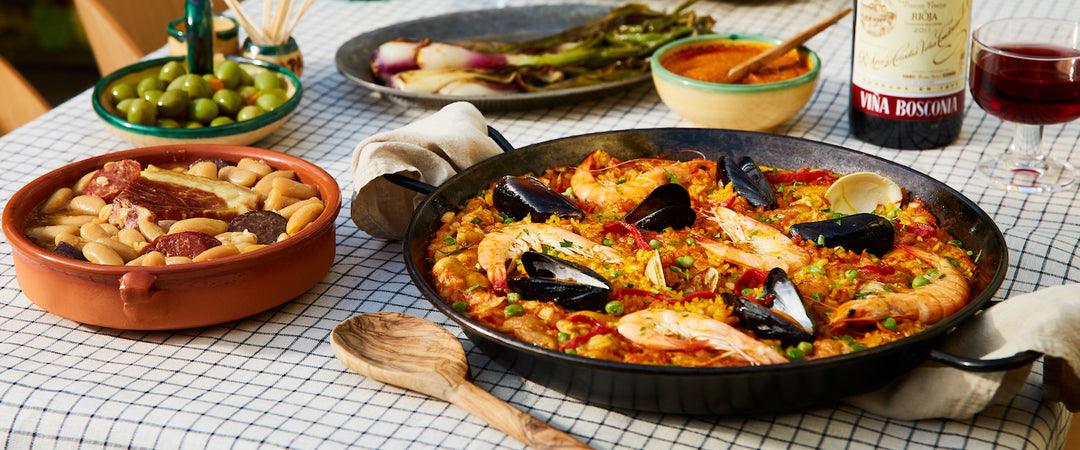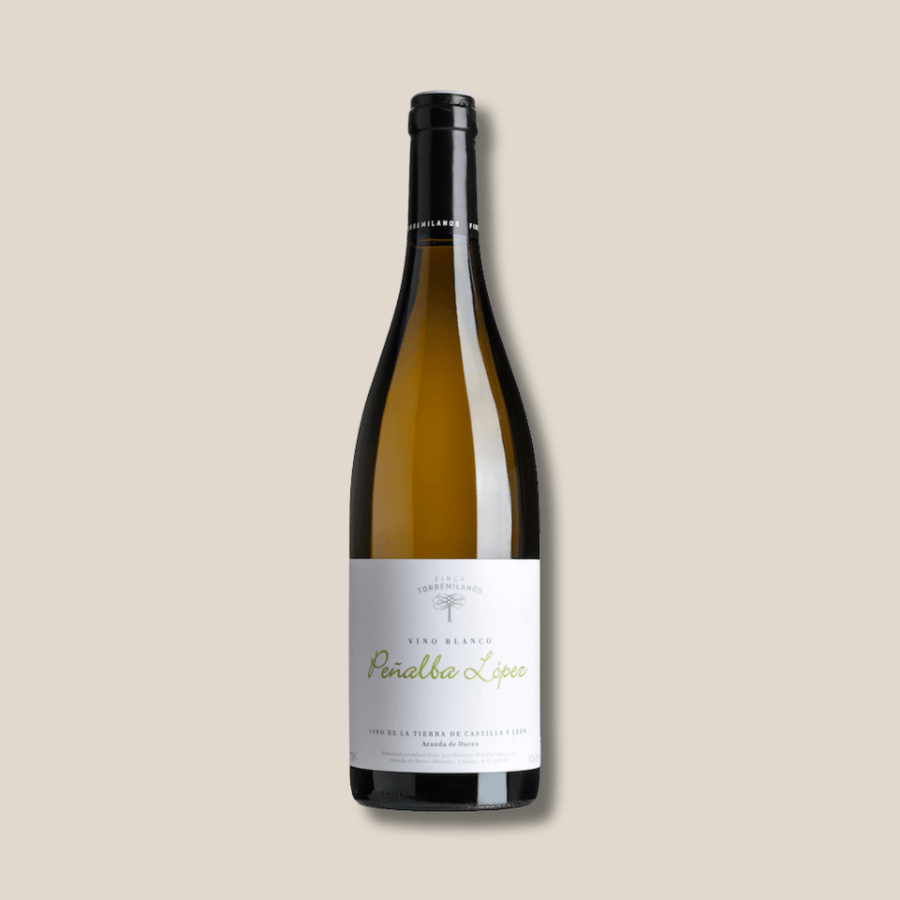April 2025 Blanco Y Branco
 |
Finca Torremilanos 2021 Peñalba LópezRegular Price: $24.99
Club Price: $21.24
|
The Spanish producer Finca Torremilano is one of our staple producers by virtue of us selling their everyday red wine called Los Cantos, a clarete called Ojo de Gallo, and a juicy fresh Tempranillo carbonico called El Porron de Lara. All are stellar, but Los Cantos’ pretty, burgundy style bottle with a burgundy label containing a ripe, quaffable blend of Tempranillo, Merlot and Syrah remains a customer and staff favorite year after year. Its blend is a bit of a departure from the usual Ribera del Duero choice of 100% Tempranillo. The Ribera del Duero area isn’t much known for white wines, hence we don’t seek out white wines from this region actively. It was thus a surprise when we tasted the Penalba Lopez, a white wine we didn’t know Finca Torremilanos made, only to be delighted by a delicious and unusual wine worthy of showcasing in this month’s club. Not all Spanish whites have to be Albarino, Godello, or Garnacha Blanca, it turns out.
"Pablo Peñalba López acquired the Finca Torremilanos estate in 1975 with 60 hectares of vines (now grown to almost 200 hectares of vineyards)—seven years before Ribera del Duero was even recognized as an appellation. He immediately began producing estate-bottled wines of remarkable quality, moving away from the former practice of selling bulk grapes to the local co-op. Pablo continued to develop and showcase the potential of the land across a wide range of soils (sand, rounded river stones, clay, limestone) and exposures.", we are told by accounts of the winery's history as retold by importer Skurnik.
According to their account of the history of the estate, the matriarch is the one who really makes it happen: “Pilar Pérez Albéniz, one of the most respected women in the region and winner of the inaugural ‘Ribera Heritage’ Award in 2019, is still at the helm, with two of her sons, Ricardo and Vicente, handling winemaking and sales respectively.” Ricardo, stepping into his father’s role starting in about 2000, began investigating organic and biodynamic farming methods, including returning to horse-plowing, hand picking, and native-yeast fermentation. In 2015 they became the first in the appellation to be Demeter certified. Since 1988 they have even produced their own barrels of French and American oak at their in-house cooperage. And, last but not least, Torremilanos also runs a hotel that is known for its great location, wonderful service, and fantastic combination of comfortable beds, a pool, and interesting winery tours. Stop by next time you’re halfway between Madrid and Burgos!

While Finca Torremilanos produces their red wines from within the Ribera del Duero DO, they source the grapes for this white wine from vineyards outside the boundaries of the DO. Due to this, this wine is labelled with the Castilla Y Leon VT qualification. The grapes, an unusual blend of Tempranillo Blanco, Sauvignon Blanc and Viura are grown in estate-owned biodynamically farmed vineyards ranging from 20 years old (for the Sauv Blanc), 60 years old for the Tempranillo Blanco to 180 years old (for the Viura).
 Image courtesy and (c) Finca Torremilanos
Image courtesy and (c) Finca Torremilanos
The wine is fermented in large oak barrels, then aged for 11 months in french oak barrels on the lees. The result is as close to a warm hug on a cool summer night as any white wine has given me lately. The nose is described by the winery perfectly. It’s a great lesson in Spanish and it’s spot-on: ”aromas de anís, miel, flores de almendro y lila, así como notas de membrillo, frutos secos y manzanilla junto con un elegante fondo mineral”, which means aromas of anise, honey, almond and lily blossoms, with notes of dried fruit, quince paste and chamomile. Wow, a feast for the senses.
On the palate it is fresh and juicy, with great mid-palate volume and viscosity. It’s a mix of dried pear and a touch of grapefruit citrus, but of the dried kind. It’s a darker yellow in color, and has the patina of a nicely aging white. There are several newer vintages of this wine already in the market, and at first we were worried about this being past its prime. It turns out after tasting newer vintages that the aging contributes a honeyed, slightly candied fruit quality that adds to its overall appeal. The vanilla and oak flavors are subtle but are supported by plenty of fresh fruit and lively acid. This will pair very well with white fish dishes or even grilled white meats. I can picture it next to a Sole with a light cream sauce and capers as well as next to a delightful charred pork cutlet fresh off a wood-fired grill. As good as this tastes now, I'd drink it. Future vintages are sure to join the regular rotation of the other Finca Torremilanos wines on our shelves.

|
Tomas Postigo 2018 BlancoRegular Price: $52.99
Club Price: $39.94
|
Before we talk about this month’s club wine, where it comes from and how it’s made, we wanted to shine a spotlight onto its winemaker. If we’re talking about top Ribera del Dueros (this is relevant, we promise), The name Pago de Carraovejas is likely to come up, and to this day is still one of the most sought after wines from the region. Founded in the 1970s, the winery’s heyday spanned solidly through the 80’s and 90’s, with a man named Tomás Postigo at its winemaking helm. The running joke was that the wine was so sought after it scarcely left the country before being bought up by Spaniards.
However, in 2009 Postigo decided to leave Carraovejas to pursue winemaking, still in Ribera del Duero, under a label of his own name alongside his four sons. While we can speculate motivations for the move, one thing seems to be clear, there is a distinct innovation and experimentation under his namesake label. Postigo remains to this day a strong advocate for both in-barrel malolactic fermentation as well as barrel aging, which he claims is the best way to imbue his wines with complexity and depth. For his red wines, he planted Cabernet Sauvignon and Malbec alongside his Tempranillo to further enhance power, acidity and florality to his wines.
His white wine contains a similar story. Instead of simply popping over to the established (and rising in popularity) Rueda for his Verdejo, Postigo instead headed south towards Segovia. The sites Postigo found generally have low pH soils and smaller rocks which help retain excellent acidity and minerality in the wine. The vines are untrellised and on the older side, meaning they stand entirely on their own atop low, gnarled stalks that hover just above the ground. The yields are small, between 1500 and 3500 kilograms/hectare, but the fruit was outstanding enough that Postigo would work with no other. Unfamiliar with Segovia? It should be no surprise, as of writing, Segovia does not hold exclusive legal status as a DO under Spanish wine law. Thus the wine for this month 's Blanco y Branco club has the regional classification: Vino de la Tierra de Castilla y León DO.
True to his philosophy, Tomás Postigo has treated this wine in a similar fashion to his reds. The Segovian Verdejo sees malolactic fermentation in oak barrels to give the wine textural creaminess and intensity of fruit character. When fermentation is complete, the wine is racked into different small French oak barrels for a 12 month nap. Periodic battonage, or stirring of the dead yeast cells, give the wine even more roundness as well as a layer of brioche-y qualities. While Verdejo is not often regarded as a top international varietal, the winemaking regiment here matches top Californian or Burgundian white wine, showing Postigo’s reverence for the grape. It expresses itself in a similar fashion to the aforementioned wines. Fresh peach and white nectarine notes are laced with citrus, white flowers and cut grass. The latter part of the palate shows the impact of the barrel and age. Pastries, honey and vanilla round out the tasting experience. Enjoy with creamy tarragon chicken or richer seafood dishes such as baked salmon or mackerel.




